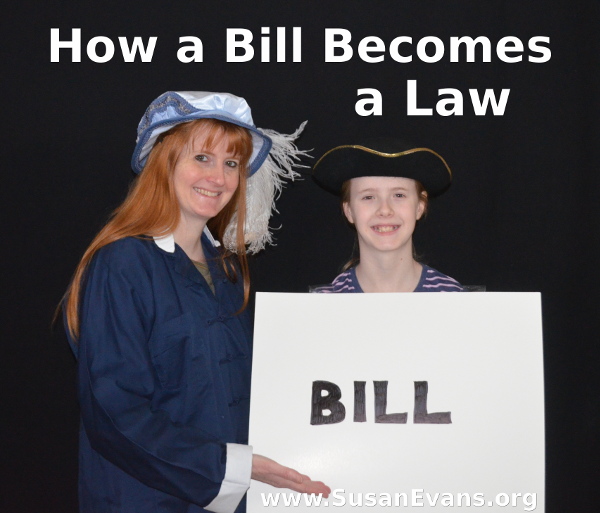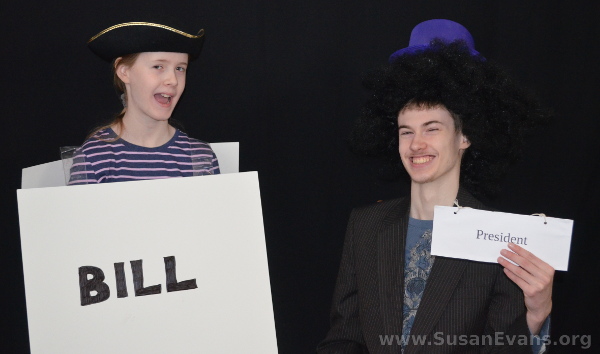Today we will dramatize how a bill becomes a law. We are studying Exploring Government by Ray Notgrass, and this is the second post in our high school government series. We are having so much fun as we re-enact many essential concepts about government. This book has helped me (as a parent) understand government better than I’ve ever understood it before.
So without further ado, here is our second government video…
How a Bill Becomes a Law (Video Demonstration)
Costumes and Props in the Skit
My daughter dressed up as a bill. We used poster board and wrote the word “bill” on it. We also gave her a three-cornered hat just for character. We had a congress and a president. The congress sat on chairs and held up Facebook likes (or un-likes) to represent their votes for or against the bill. The president was dressed as the Mad Hatter from Alice in Wonderland (no insult intended to our current president…)
This is How a Bill Becomes a Law:
- A bill originates in the House of Representatives or the Senate. One of the members takes his proposed bill and gives it to the clerk. The clerk assigns it a number and sends it to the proper committee.
- The committee deliberates on the bill and proposes amendments to it, and if the committee approves, it is sent back to the House of Representatives.
- If the bill passes the House, it goes to the Senate. If it passes the Senate, it is sent to the President.
- The President can then either veto or sign it. If he vetoes it, the bill goes back to the House and the Senate. Only if the bill gets a two-thirds majority in both houses will the veto be overridden. Then it becomes a law anyways.
- Or if the President signs a bill, then it becomes a law.
I hope you enjoyed our demonstration of how a bill becomes a law. Stay tuned for next week’s post: Preamble to the Constitution!
The links in this series of blog posts are not affiliate links. Please buy the book from their website to bless their family the most!






